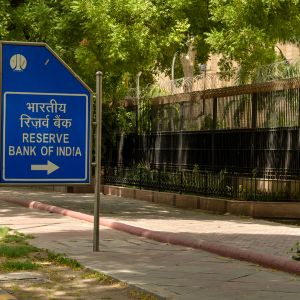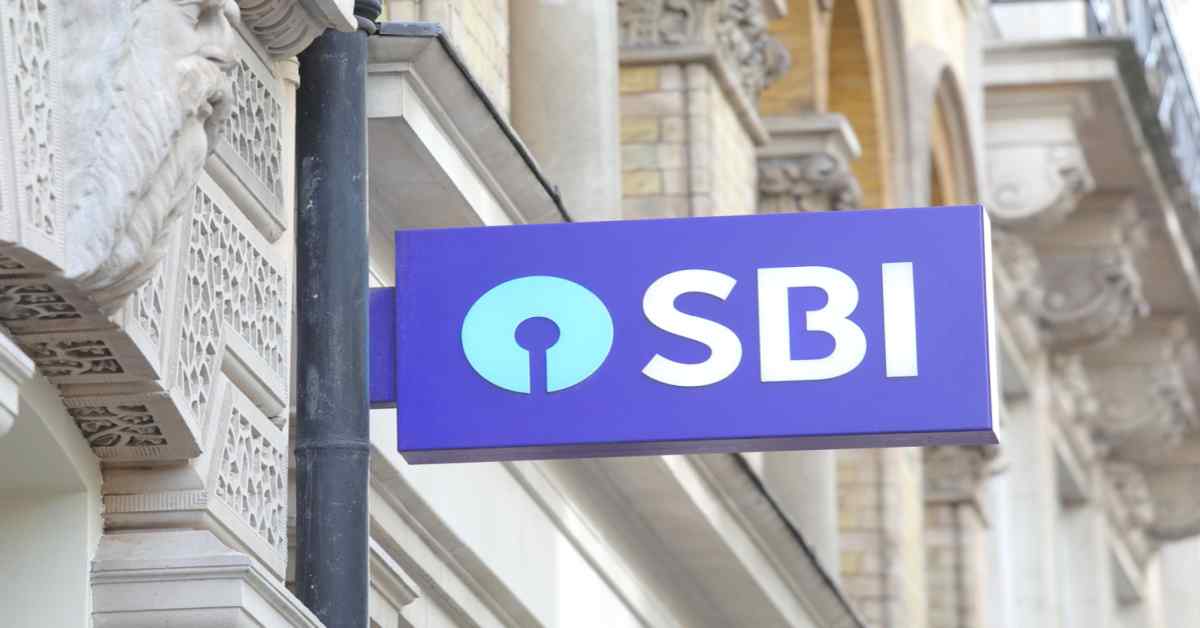Table of Contents
Quality Service Guarantee Or Painting Free

Get a rental agreement with doorstep delivery

Find the BEST deals and get unbelievable DISCOUNTS directly from builders!

5-Star rated painters, premium paints and services at the BEST PRICES!
Loved what you read? Share it with others!


Submit the Form to Unlock the Best Deals Today
Help us assist you better
Check Your Eligibility Instantly

Experience The NoBrokerHood Difference!
Set up a demo for the entire community
Repo Rate and the Rate at Which You Need It
Table of Contents
It’s hard to keep up with all the changes, from policies to laws and curfews to more laws. Even though we’re in a pandemic, the planning for our future hasn’t stopped. We sometimes forget what an important role the repo rate plays in our future investments and plans. From the repo rates history and the meaning of the repo rate to the current repo rate, we have all the information you need.
Current Repo Rate 2023
The Monetary Policy Committee (MPC) announced on 8 June 2023 that the repo rate was increased by 25 basis points.This makes the current repo rate 6.50% (from the 6.25% that it was earlier).
The reverse repo rate stands unchanged at 3.35%.The Bank Rate and the Marginal Standing Facility (MSF) rate has changed to 6.75%.The Standing Deposit Facility Rate is 6.25%.
Quality Service Guarantee Or Painting Free

Get a rental agreement with doorstep delivery

Find the BEST deals and get unbelievable DISCOUNTS directly from builders!

5-Star rated painters, premium paints and services at the BEST PRICES!
What is Repo Rate / Repo Rate Meaning?
Repo rate is the rate at which the central bank of a country (Reserve Bank of India in the case of India) lends money to commercial banks in the event of any shortfall of funds. The Repo rate is used by monetary authorities to control inflation.
When inflation occurs, the central bank increases the repo rate in a way for it to is disincentive so that banks do not borrow money from the central bank. In turn, the money supply in the economy is reduced and inflation decreases.
How does Repo Rate Work?
When the Reserve Bank of India decides to review its monetary policy, people are wary about the repo and reverse repo rate from stakeholders like banks and industry analysts.
When you borrow money from the bank, the transaction naturally includes interest on the principal amount. This is known as the cost of credit. In a much similar way, banks borrow money from the Reserve Bank of India, during a cash crunch or inflation on which they are required to pay a certain amount of interest to the Central Bank. The interest that they pay is called the repo rate.
A Repo rate is also called a ‘Repurchasing Option’ or ‘Repurchase Agreement’. It basically means that it is an agreement that includes the banks providing eligible security measures such as Treasury Bills to the Reserve Bank of India when they take overnight loans.
How does a Bank Calculate the Repo Rate
For banks to settle on a standard repo rate, very important is the interest rates that commercial banks pay themselves to the Reserve Bank of India (RBI) or the interest rates they get when depositing money in the RBI. This is where you should understand the Reverse Repo Rate meaning, as this is the rate of interest that the RBI pays to the commercial banks when they keep their extra money with the central bank. For example, given the RBI is also essentially a bank, it needs to earn more than it pays out, and therefore, the repo rate also has to be greater than the Reverse Repo Rate. The repo rate as of February 2022 for instance was 4%, while the reverse repo rate was 3.35%.
The Components of a Repo Rate Transaction

Naturally, the Reserve Bank of India will not hand out loans when banks ask for it any time, hence there are some things that need to be in place for a bank to avail of a loan from the Reserve Bank of India.
1. Inflation
The main goal here is to keep inflation at its limit. So, the Central Bank of India will increase or decrease the repo rate according to inflation at the given time.
2. Hedging and Leveraging
Reserve Bank of India’s main goal is to hedge and leverage. They do this by buying securities bonds from the banks and providing cash to them in exchange for the collateral deposited.
3. Short-Term Borrowing
The Reserve Bank of India makes it very clear that this loan is strictly for a short period of time, specifically an overnight post and the banks buy back their securities at a price that was already decided.
4. Collateral and Security Elements
In exchange for the money loaned, the Reserve Bank of India accepts what’s known as Collateral, in the form of bonds or gold, etc.
5. Cash Reserve
The reason banks borrow money from the Reserve Bank of India is that they need to maintain their cash reserve or Liquidity as a precautionary measure.
The Effects of Repo Rate on the Economy
It may seem like the repo rate plays no role in our day-to-day life. Why would we be affected by what happens between the RBI and other banks, right? This is not true, let’s see why.
The Repo rate is an integral part of the Indian Monetary Policy and regulates our country’s money supply, inflation levels and liquidity.
When inflation is on the rise, it is important that the RBI brings down the flow of money in the economy. In this way, they increase the repo rate. Because of this borrowing becomes a costly affair for businesses and industries, as a result of which, it slows down investment and money supply in the market.
This has a negative effect on the growth of the economy but helps control inflation.
In the other case where inflation is too low, the reserve bank of India needs an increase in funds so it lowers the repo rate. This way many businesses and industries find it easier to take loans from the banks for their various investment purposes. This in turn increases the overall supply of money in the economy which additionally increases the growth rate of the economy.
What is Reverse Repo Rate?
A reverse repo rate is what’s done to absorb the liquidity in the market, which in turn restricts the borrowing abilities of investors. The Reverse Repo Rate is when the RBI takes money from the banks when there is surplus liquidity in the market. The banks benefit as they receive interest for their holdings with the central bank. When there are high levels of inflation in the economy, the RBI increases the reverse repo rate. This makes the banks park more funds with the RBI in order to earn higher returns on surplus funds. In return, banks are left with fewer funds to give out loans to consumers.
Difference between Repo Rate and Reverse Repo Rate
- The Repo rate is the rate at which the Reserve Bank of India lends money to the banks. The Reverse Repo Rate is the rate at which the Reserve Bank of India borrows money from the banks.
- It’s important to note that the Repo Rate is higher than the reverse repo rate and in turn, the reverse repo rate is lower than the repo rate.
- Repo Rate is used to control inflation and deficiency in funds, whereas the Reverse repo rate is used to manage the cash flow.
- The Repo rate involves the sale of securities, which are later repurchased and the Reverse repo rate involves the transfer of money from one account to another.
Now that we understand the difference, let’s dive into repo rate historical data:
- From the 28th of January 2014, the repo rate was 8% and the reverse repo rate was 7%.
- From the 15th of January 2015, the repo rate was 7.75% and the reverse repo rate was 6.75%.
- From the 4th of March 2015, the repo rate was 7.50% and the reverse repo rate was 6.75%.
- From the 2nd of June 2015, the repo rate was 7.25% and the reverse repo rate was 6.25%.
- From 29th September 2015, the repo rate was 6.75% and the reverse repo rate was 5.75%.
- From the 5th of April 2016, the repo rate was 6.50% and the reverse repo rate was 6%.
- From the 4th of October 2016, the repo rate was 6.25% and the reverse repo rate was 5.75%.
- From the 6th of April 2017, the repo rate was 6.25% and the reverse repo rate was 6%.
- From the 2nd of August 2017, the repo rate was 6% and the reverse repo rate was 5.75%.
- From the 6th of June 2018, the repo rate was 6.25% and the reverse repo rate was 6%.
- From the 1st of August 2018, the repo rate was 6.50% and the reverse repo rate was 6.25%.
- From the 7th of February 2019, the repo rate was 6.25% and the reverse repo rate was 6%.
- From the 4th of April 2019, the repo rate was 6% and the reverse repo rate was 5.75%.
- From the 6th of June 2019, the repo rate was 5.75% and the reverse repo rate was 5.50%.
- From the 7th of August 2019, the repo rate was 5.40% and the reverse repo rate was 5.15%.
- From the 10th of October 2019, the repo rate was 5.15% and the reverse repo rate was 4.90%.
- From the 6th of February 2020, the repo rate was 5.15% and the reverse repo rate was 4.90%.
According to the RBI Monetary Policy repo rate or the latest repo rate is 4% and the reverse repo rate is 3.35%. The CRR rate was 3% (which was till March 21st 2021). The SLR is 18%, the Marginal Standing Facility Rate is 4.25% and the Bank rate is also 4.25%.
Repo Rate Linked to Home Loans

When banks link the interest rate on their loans to the repo rate, this is known as the repo linked leading rate, RLLR. So, when home loans are attached to the repo linked leading rate, it is known as repo linked home loans. The repo linked home loan is not only available for first-time purchasers but also for existing borrowers. The benefit of this is that if you’ve borrowed under the marginal cost of a funds-based lending rate, you have the opportunity to move to RLLR.
Key differences between Repo Rate vs Bank Rate
Though there are some similarities between Repo Rate and Bank Rate, such as the fact that both are set by the central bank and are used to monitor and control the cash flow in the market, there are also some significant distinctions. Check out the pointers for bank rate vs repo rate -
The Bank Rate is applied to loans made by the central bank to commercial banks, whereas the Repo Rate is used for the central bank's repurchase of securities sold by commercial banks.
When charging Bank Rate, no collateral is required, however when charging Repo Rate, securities, bonds, agreements, and collateral are required.
The Repo Rate in India is never higher than the Bank Rate.
Increases in Bank rates have a direct impact on the lending rates offered to customers, limiting people's ability to obtain loans and harming general economic growth, but increases in Repo rates are usually handled by banks and have no direct impact on customers.
Bank Rate, on the other hand, serves the long-term financial needs of commercial banks, whereas Repo Rate means serving the short-term financial demands.
Despite the distinctions between the Bank Rate and the Repo Rate, both are utilised by the RBI to control liquidity and inflation in the market. In a nutshell, the central bank uses these two formidable instruments to introduce and monitor the market's liquidity, inflation, and money supply.
Importance of Repo Rate and Reverse Repo Rate
Repo rate and Reverse repo rate are monetary measures. They are used by the RBI to control market liquidity. They can be used to stabilise the prices of commodities and also to boost economic development.
The repo-linked Lending rate is a new development introduced by RBI. This external benchmark will be revised by banks each time RBI revises the repo rate. All floating rate loans such as car loans and home loans are linked to this external benchmark since October 2019
Significance of Repo Rate and Reverse Repo Rate
Repo rate and reverse repo rate are significant from the perspective of RBI’s liquidity framework. The Liquidity framework aims at avoiding liquidity-related crises in the Indian Banking systems and this is achieved through the implementation of repo agreements. Through repo transactions, RBI can inject liquidity into the Indian banking system, while reverse repo is used to absorb liquidity.
The RBI is responsible for balancing inflation and economic growth in the country. This is done by managing the repo rate and reverse repo rate. By adjusting these rates, the liquidity in the economy can be controlled.
Impact of Repo Rate and Reverse Repo Rate Increase by RBI
When the Repo rate is increased, it becomes expensive for commercial banks to borrow money from the RBI. This leads to an increase in the rate of loans. Fewer people will take loans, which means there is less money available in the economy for circulation.
An increase in the reverse repo rate means that banks get a higher interest rate for excess funds deposited with the RBI, and this prompts them to deposit more. Thus the flow of money in the markets falls and liquidity is reduced.
Impact of Repo Rate and Reverse Repo Rate cuts by RBI
When RBI cuts the repo rate, banks can borrow money from RBI at a cheaper rate. With more money available with the banks, more loans are approved and therefore the cash flow in the economy increases, leading to increased liquidity.
When RBI cuts the reverse repo rate, banks get less interest when they deposit excess money with the RBI. And so banks invest money in more lucrative avenues like the money market, increasing the liquidity in the economy.
Despite the distinctions between the Bank Rate and the Repo Rate, both are utilised by the RBI to control liquidity and inflation in the market. In a nutshell, the central bank uses these two formidable instruments to introduce and monitor the market’s liquidity, inflation, and money supply.
Current Repo Rate & Reverse Repo Rate – May 2022
Current repo rate today - 4.40%
Current reverse repo rate - 3.35%
The repo rate is the rate at which commercial banks borrow money by selling their assets to the Reserve Bank of India (RBI) to maintain liquidity in the event of a cash shortage or other regulatory actions. It is one of the RBI's primary tools for maintaining price stability.
With so many laws and rates, it’s not easy to find what’s best for you and your plans and investments. With the changes that come with the RBI and its monetary policies and laws. But luckily for you, you have us! Our experts guarantee you the best services and easy ins and outs of the system with years of experience when it comes to getting you the best rates for home loans. Click the link below to know more about NoBroker home loan services.

FAQs
Ans: The decrease in repo rate brings about growth, improvement and development in the economy. When this happens, consumers will borrow more from the banks and it, in turn, balances out inflation.
Ans: This is known as Term Repo; the term Repo is defined as a period of more than one day. The normal time period of term repo or variable rate term repo is 7 days, 14 days and 28 days.
Ans: According to the RBI Monetary Policy, the repo rate is currently 4% and the reverse repo rate is 3.35%.
Ans: When banks link the interest rate on their loans to the repo rate, this is known as the repo linked leading rate, RLLR. So, when home loans are attached to the repo linked leading rate, it is known as repo linked home loans.
Ans: Reverse repo rate is what’s done to absorb the liquidity in the market, which in turn restricts the borrowing abilities of investors. The Reverse Repo Rate is when the RBI takes money from the banks when there is surplus liquidity in the market. The banks benefit as they receive interest for their holdings with the central bank. When there are high levels of inflation in the economy, the RBI increases the reverse repo rate.
Ans: RBI in its monetary policy for the year 2021, has kept the repo rate unchanged at 4.00%.
Loved what you read? Share it with others!
Most Viewed Articles

Home Loan Interest Rates for All Banks in November 2024
November 3, 2024
23796+ views

ICICI Home Loan Interest Rates - Updated in November 2024
November 3, 2024
22441+ views

SBI Home Loan Interest Rates - Updated in December 2024
December 17, 2024
20446+ views

Understanding Home Loan Tenure and Why It's Important
August 22, 2022
16044+ views

SBI Home Loan Interest Certificate: Benefits, Offline and Online Options, Get via Yono App in 2025
December 23, 2024
11873+ views
Recent blogs in
IIFL Home Loan Interest Rates: Eligibility, Types, and Documents Required in 2025
December 30, 2024 by Prakhar Sushant
HDFC Home Loan Interest Rates - Updated in December 2025
December 30, 2024 by NoBroker.com
A Comprehensive Guide to Circle Rates in Noida 2025
December 30, 2024 by Kruthi
₹18 Lakh Home Loan EMI With Calculator And Interest Rates 2025
December 27, 2024 by Priyanka Saha
₹50 Lakh Home Loan EMI With Calculator And Interest Rates for 2025
December 26, 2024 by Manu Mausam




Join the conversation!